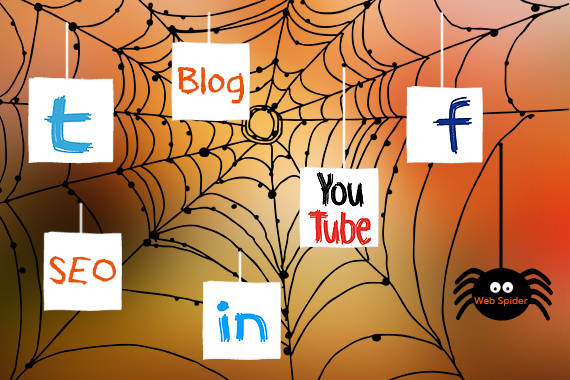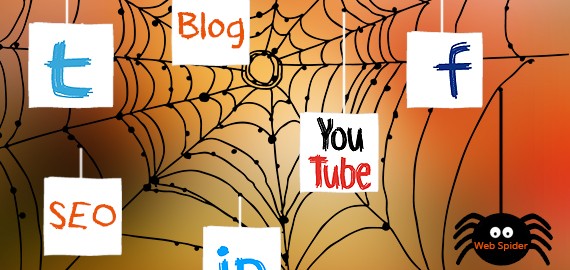
You already know that the old school marketing tactics aren’t working. Hell, you’ve probably been caught on the wrong side of an irritating sales call a few times today already. What you want is a powerful online presence where you can aggressively market and grow your business. But all this digital marketing stuff feels like being caught in a spider’s web full of monsters like SEO, content marketing, and social media.
Fear not, we’re here to help! In this post we’ll lift the fog on inbound and prove to you that you’ve got nothing to fear.
Lifting The Fog On Inbound Marketing
Firstly, why is everyone talking about inbound and digital marketing?
Simple, it’s because the way we market has changed dramatically over the past decade. You’ve probably noticed consumers’ behavior has changed (even your own) as they turn their back on traditional marketing tactics. Nowadays a potential buyer generally does 57% of their product research before even speaking with a sales person.
This change means you need to make sure your business is using tools like marketing automation, social media, content marketing, and SEO to attract and convert potential buyers. You need to do this without scaring them off using traditional marketing; yes those irritating ads, promotions, cold calls, and emails.
Inbound marketing offers a new approach to marketing your products and services. An approach that doesn’t involve hunting down new customers; instead they’ll come to you if you give them something they love!

Because potential customers are trying to solve a problem, they LOVE finding information that will help them. Your job is to create and deliver the love by turning your website into a hub of relevant information for your industry.
Now that we’ve lifted the fog on the concept of inbound marketing a little, it’s time to look at some of the monsters associated with it. We aim to prove these “monsters” are more like the Monsters, Inc crew than the ghouls you believed lived under your bed as a kid – and in some cases perhaps still do.
The Content Marketing Monster
Let’s start with with the Content Marketing monster, which is a bit like Sulley. A good-natured, hardworking, and confident guy who loves his job, basking in the limelight of being Top Scarer.

[Image source: The Disney Wikki]
Don’t get me wrong, it’s not about going out there and scaring the life out of customers. It’s about doing your best to WOW them with your content roar!
Here are two tricks to practice that will have your content roaring with value:
- Consistently creating relevant content.
- Making sure you know your target audience really well.
It’s time to bring another tool from the shadows into the light: the buyer personas. To make sure that your content resonates with your audience, you need to create buyer personas. These are semi-fictitious characters, based on existing or ideal customers who buy your products and services. Most businesses have 2 – 3 personas to cover their target audience.
The Social Media Monster Under The Bed
“Under my bed?” you may ask. Yes, that’s right, under your bed! It has never been easier for marketers to be so close to their customers. Social media platforms give you the opportunity to research customer interests and engage with them. Take the opportunity to focus your attention on the platforms where your customers hang out.

[Image source: The Disney Wikki]
Like Celia, social media can be a kind sweetheart, especially when you take the time to engage and help people across the various channels. But beware, the social media monster has an explosive temper when angered, so make sure you follow good social media etiquette.
Looking for your customers? In broad strokes you can split social media channels along these lines:
-
B2C-friendly platforms, such as Facebook, Twitter, or Google+, or
-
B2B-friendly platforms such as LinkedIn and SlideShare.
It’s time for you to faced your fear of getting “social” and really look for where your clients are. There is a lot of information available out there that can guide you.
The three wicked search engines and their loyal servant, SEO



[Image source: The Disney Wikki]
They have their twisted calculations, putting you up at the beginning of the search list, or burying you down among many other sites where no customer could find you. Google, Bing, and Yahoo Search. You know them all too well and they scare the hell out of you!
But look at them this way: the search engines constantly improve their algorithms. To come out on top you need to create human content. Content written for humans, not search engines!
While they may seem wicked, they’re actually putting the customers first. By making sure that your content is valuable, unique, and properly written, you’ll also get support from the search engines as well!
Some Coaching Tips
Sometimes you need a character like Mike Wazowski, a proud and confident monster, who coaches and drives Scully through a strict scare exercise regimen.

[Image source:The Disney Wikki]
Before you waste too much of your energy writing blog posts, making social media profiles, creating landing pages, or running after PR for your business, here are some coaching tips from Mike and the Emerge Team:
-
Don’t do anything before you create your buyer personas. They are the basis of your content marketing strategy. Here’s how you can get started pulling them together: Interview customers, co-workers, and the sales team directly or using online surveys.
-
Create compelling content. You are, above all, an expert in your industry. You know what customers want, what the competition offers, and how the market evolves. Put on your wizard hat and transform some of the content scattered around the office into blogs, case studies, and eBooks. Customer questions about your products and services make for great blog posts. Take questions and answer them in a series of posts. After all, blogs bring up to 55% more website visitors.
-
Before you start creating business profiles on all the social networks, find where your customers are spending their time. Engage with them on specific networks rather than diluting your resources across multiple networks.
-
Don’t rely solely on your social media platforms, e-mails, or SEO for content distribution. There are so many other tactics available out there which you can adopt, even if you have a tight budget. Invest time in creating and distributing great content.
-
Test, measure, track! Doing all this work without finding out what actually brings results is a waste of time and energy. You may want to see increasing ROI after having implemented your brand new inbound marketing strategy, but you first need to understand the impact of your actions. Test different landing pages, headers for your blog posts, calls-to-action, and posts and measure which ones bring increased engagement and conversions. Track progress and learn what works for you. There’s no generally acknowledged recipe for success, but there is one that will work for your specific business. One tool that you can rely on is Google Analytics.
-
It is a lot of work to be done, be sure of that, but you don’t have to do it alone. Assign roles to a team to implement your inbound marketing strategy. Make sure your team has the right skills and the right people.
Business Articles | Business 2 Community
(264)







